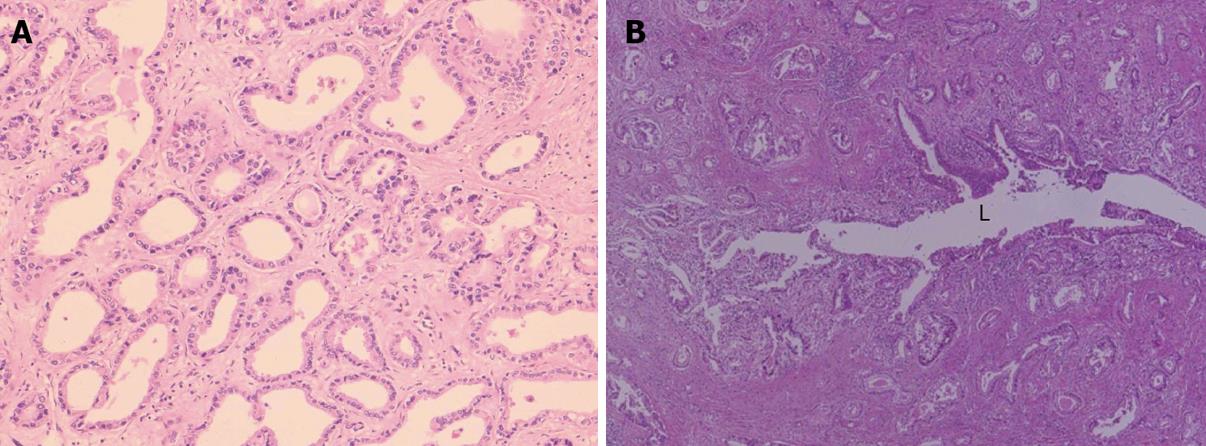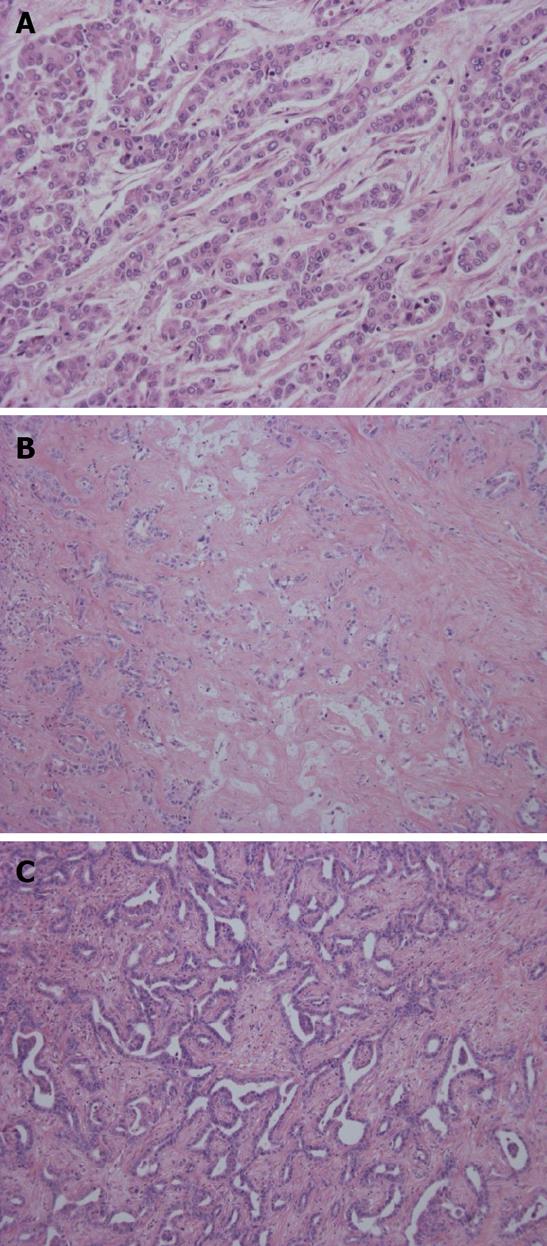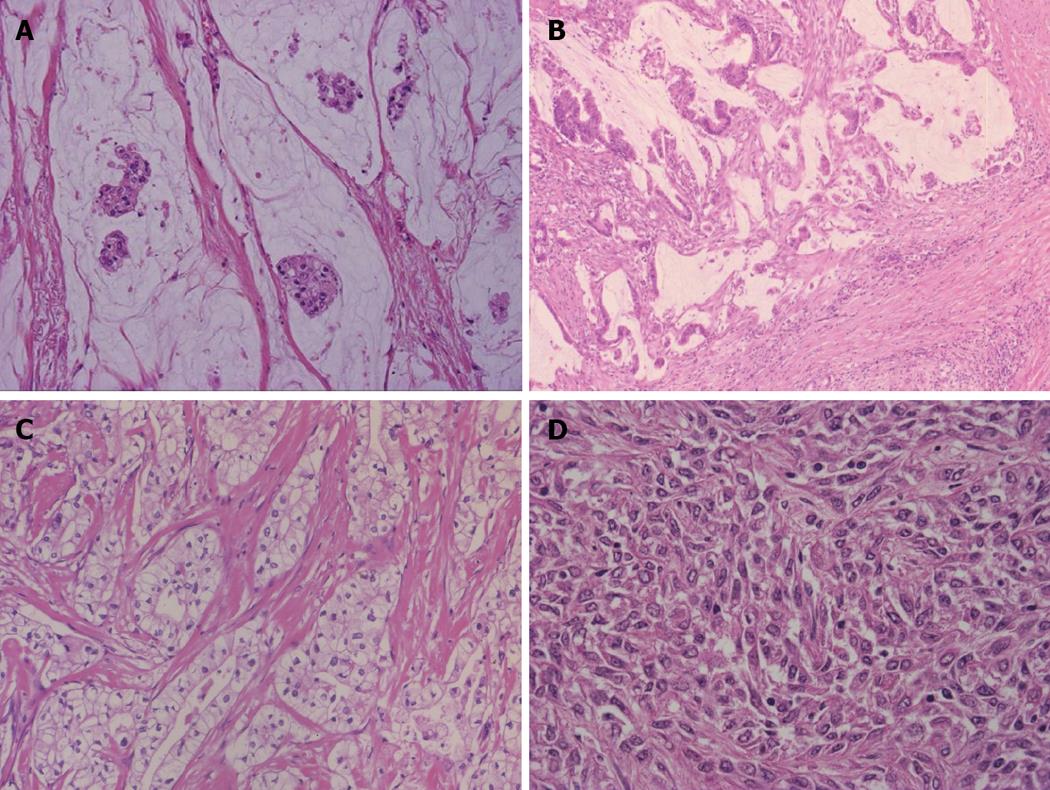Copyright
©2010 Baishideng Publishing Group Co.
World J Hepatol. Dec 27, 2010; 2(12): 419-427
Published online Dec 27, 2010. doi: 10.4254/wjh.v2.i12.419
Published online Dec 27, 2010. doi: 10.4254/wjh.v2.i12.419
Figure 1 Gross features of intrahepatic cholangiocarcinomas.
A: Mass forming type. The carcinoma forms a mass showing compressive growth; B: Periductal infiltrating type. The carcinoma spreads along the biliary tree (arrow); C: Intraductal growth type. The carcinoma shows papillary growth in the dilated intrahepatic bile duct lumen (arrow).
Figure 2 Conventional type (bile duct type) of intrahepatic cholangiocarcinoma.
A: Small bile duct type. A well-differentiated tubular adenocarcinoma with a desmoplastic reaction is found; B: Large bile duct type. The carcinoma spreads along the bile duct lumen and infiltrates the bile duct wall. L: bile duct lumen.
Figure 3 Bile ductular type of intrahepatic cholangiocarcinoma.
A: A small ductular carcinoma grows in fibrous stroma; B: The central part of the tumor shows a dropping-out of carcinoma cells with empty spaces; C: Ductal plate malformation type.
Figure 4 Intraductal type of intrahepatic cholangiocarcinoma.
A: Intraductal papillary neoplasm of bile duct. Neoplastic biliary epithelia show papillary growth in the dilated lumen. There is no invasion into the duct wall; B: Intraductal tubular neoplasm of bile duct. The neoplasm (a) appears as a cast in the dilated lumen; C: Intraductal tubular neoplasm of bile duct. The tubular pattern is predominant. Higher magnification of Figure 4B; D: Superficial spreading type. Carcinoma cells show intraductal, intraepithelial growth with a micropapillary configuration and intraglandular involvement. There is no evident invasion into the duct wall.
Figure 5 Variants of intrahepatic cholangiocarcinoma.
A: Mucinous type and carcinoma cells are floating in a mucinous lake; B: Mucinous type and in the invasive part of the intraductal papillary neoplasm of bile duct, mucinous changes are found; C: Clear cell type and clear cell carcinoma shows a tubular pattern with a desmoplastic reaction; D: Sarcomatous type and spindle cell sarcoma grows medullary.
- Citation: Nakanuma Y, Sato Y, Harada K, Sasaki M, Xu J, Ikeda H. Pathological classification of intrahepatic cholangiocarcinoma based on a new concept. World J Hepatol 2010; 2(12): 419-427
- URL: https://www.wjgnet.com/1948-5182/full/v2/i12/419.htm
- DOI: https://dx.doi.org/10.4254/wjh.v2.i12.419













